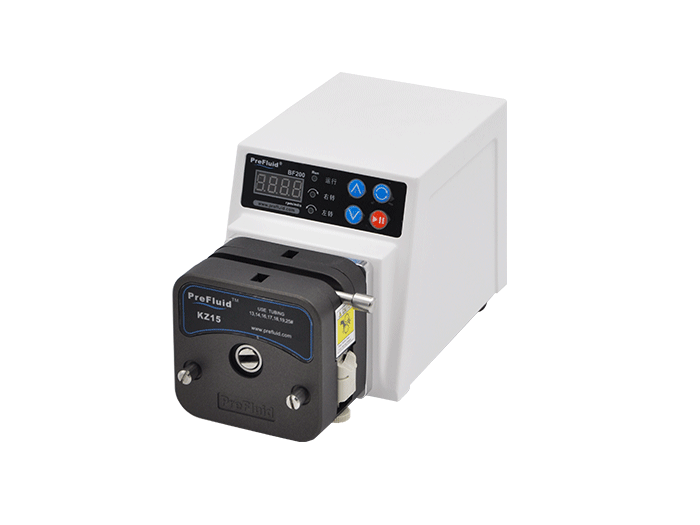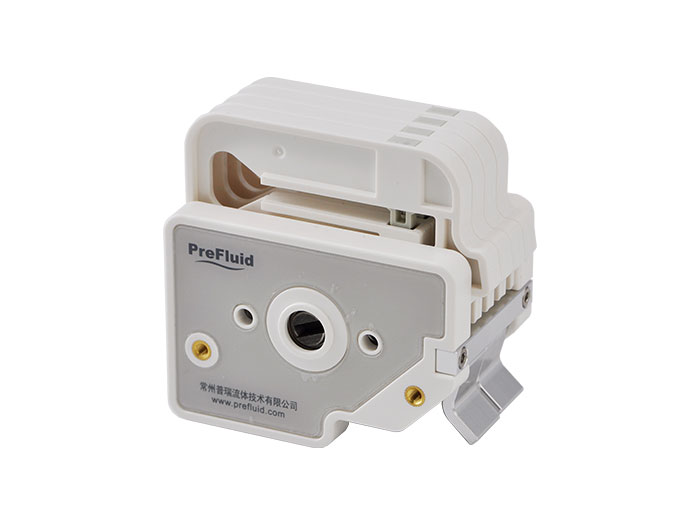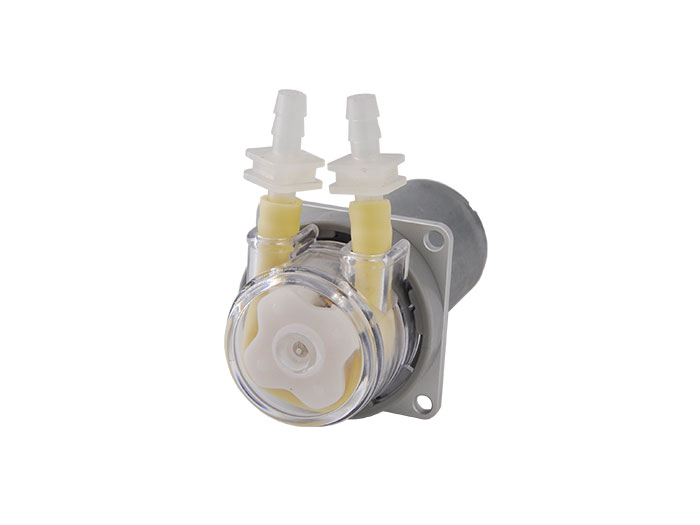After the fluid enters the peristaltic pump head, it is stored between two rollers to form a "fluid pillow". This was followed by a brief cut-off, as a section of the peristaltic pump tube at the back was again blocked by the roller, forming a "fluid pillow" again. This cycle results in a pulsating, rather than smooth, continuous fluid.
After the fluid enters the peristaltic pump head, it is stored between two rollers to form a "fluid pillow". This was followed by a brief cut-off, as a section of the peristaltic pump tube at the back was again blocked by the roller, forming a "fluid pillow" again. This cycle results in a pulsating, rather than smooth, continuous fluid.
If this pulsation is not desired, a peristaltic pump head with adjustable locking of the peristaltic pump tube can reduce the pulsation by 25%, as this reduces the degree of disconnection between the fluid pillows. However, some applications have more stringent restrictions on the pulsation generated by peristaltic pumps. For them, a 25% reduction in pulsation is not enough. In this case, four other measures may be considered to further reduce pulsation: peristaltic pump head styling with staggered locks and more rolls; Adopts the form of multi-peristaltic pump head with staggered pulsation; Adopt pulsation buffer; And the replacement of the discharge pipe configuration. Timing also requires that the locking degree is exactly maximum when the roller is located at the top dead center (TDC) of the peristaltic pump head. However, some peristaltic pump heads contain six to eight rolls and are designed with staggered locks ---- that is, the roller is turned away from the top dead center of the peristaltic pump head when the locking degree is maximum. A combination of these two designs can be used to eliminate pulsations.
The two peristaltic pump tube clamps (or peristaltic pump tube beds) with staggered locking can be directly installed in different directions of the peristaltic pump head, which can make the peristaltic pump tubes in the two peristaltic pump tube beds alternately reach the maximum locking degree, and the roller is just opposite the top dead center. Use a tee joint to divide the entrance into two channels, and use a tee joint at the exit to combine the two channels into one. This allows the fluid pulsation to alternately reach the tee at the outlet. Since six to eight rollers are installed, the volume in the fluid pillow is almost the same as the volume of the broken flow. In this way, each fluid pillow in one channel can fill exactly the disconnected part of the other channel. Due to the increase of roller, the frequency of fluid pulsation increases while the amplitude decreases. In this way, the pulsation can be basically eliminated. This method is especially suitable for fluids with a flow rate of less than 460 ml/min.
For fluids with a flow rate of more than 460 ml/min, two peristaltic pump tube clips (or peristaltic pump tube beds) with staggered locks can also be installed, although the effect is slightly less effective. Two peristaltic pump heads can be connected in parallel. Both peristaltic pump heads are designed to lock to the maximum when the roller is located at the top dead center (TDC) of the peristaltic pump head; However, the rotation position of the two rotors is required to stagger each other. The best effect is achieved when the interleaving distance of peristaltic pump head reaches 50% of the roller distance. In this configuration, the rolls do not reach TDC at the same time, so there is an alternate flow pillow and cut-off between the two adjacent channels. If the inlet and outlet ends of each channel are connected by a tee joint, the fluid pillow in one channel can just fill the cut-off part at the outlet of the other channel. However, this peristaltic pump head produces a larger volume ratio of fluid pillow and cut-off parts than a peristaltic pump head with six to eight rollers. In this way, multiple fluid pillows from adjacent channels overlap each other, and the pulsation can only be reduced by 80-95%.


